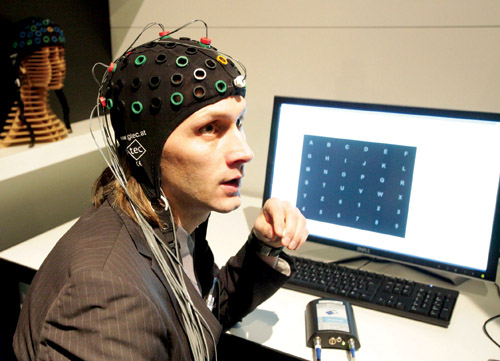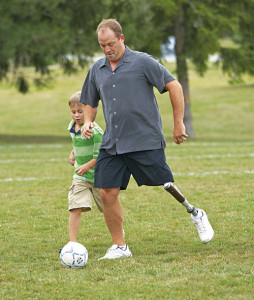Bionics (biology plus electronics) is a branch of science that deals with the application of living systems and biological methods, to design and implement engineering systems. Extensive research in this field has led to the development of gadgets that can perform similar to, or even better than normal human functionalities. They are paving way for the world of cyborgs.

Brain implants
Imagine a device that can help you control your moods, or something that can let the blind see, the deaf hear and the paralysed walk. all this has been made possible by different brain implants available today. Brian-computer interface, deep brain stimulation, vagus nerve stimulation and bionic eye are a few examples.
Brain-computer interface. A brain-computer interface (BCI) is a mechanism used to conjoin human brain and machines. Researchers have developed devices that let the brain control the movement of bionic devices directly. Electrodes are implanted into specific regions of the subject’s brain. These electrodes can detect brain signals intended for specific functions, like finger grasp or moving the hand up and down. A computer translates these signals into movement of the bionic body part. This technology has been developed from the idea of ‘using thoughts to control simple functions,’ like moving a cursor on a computer screen to performing more complex activities such as holding a thermos of coffee, grabbing a bar of chocolate and giving a hi-five. Extensive research in this field is being conducted by University of Pittsburgh Medical Center (UPMC) and Cyberkinetics Neurotechnology Systems. The device has not been made commercially available yet. Clinical trials are in progress and in the near future BCI would be able to control bionic devices with much more dexterity and coordination.
Bionic eye. Bionic eye is an implant that restores the sense of vision in patients suffering from degenerative retinal conditions. It consists of a retinal implant surgically placed at the back of the eye and some external devices.
A microchip with 60 electrodes and a radio receiver are implanted in the patient’s eye and below the skin, respectively. The patient is required to wear special glasses that are fitted with a video camera, video-processing microchip and a radio transmitter. The picture captured by the camera is processed to electrical signals. This is transmitted via radio waves and is received at the implanted receiver. These received signals activate the electrode array, which in turn acts like an activated photoreceptor, and helps the brain to process the image.
The Argus Retinal Prosthesis system, produced by California-based Second Sight Medical Products, Inc., is a retinal implant that restores and improves some functional vision of people suffering from the conditions like retinitis pigmentosa and macular degeneration.
Limb prostheses
The loss of a limb can have serious negative effects on a patient—both mentally and physically. There was a time when the purpose of limb prosthesis was to conceal disability. But now it helps the subject to restore some of the lost functions too.

Artificial arm. A modular prosthetic limb (MPL) with up to 26 degrees of freedom has been developed recently, which offers movement beyond the limits of a biological arm. It is equipped with an array of sensors that measure temperature and vibration. The MPL developed by John Hopkins University Applied Physics Laboratory has been successfully tested by University of Pittsburgh School of Medicine and UPMC’s brain-computer interface on a neck-down paralysed woman. After implantation, the woman was able to control the MPL with her thoughts alone.
Bionic hand. A bionic hand offers five independently operating fingers, a rotating thumb and a rotating wrist. This lets the patient perform various functions like grabbing a cup, turning a lock and pressing buttons. A bionic hand is equipped with powerful electrical sensors that can detect muscular movements in the residual limb. The activity corresponding to each set of signals is selected from a pre-programmed list. Interestingly, the latest version of a bionic hand, named i-Limb Ultra, developed by Touch Bionics, helps in controlling actions performed by the hand via a smartphone app.
Smart leg. Smart legs are prosthetic legs that offer increased functionality and comfort with the help of a digital control system. according to Dave Kozlowski of Sandia National Laboratories, “The smart legs will enable a more normal and efficient walking gait.” Scientists of Sandia are creating a socket that will self-adjust to the swelling of the residual limb over the course of the day. This can avoid the pressure sores that may result from rubbing against the prosthetic.
C-leg by Otto Bock Healthcare is a prosthetic device with built-in microprocessor that increases the stability and lets amputees tackle slopes, ride bikes and participate in sports activities.
Ankle-foot system. The latest models of ankle-foot system available today use complex-motion sensors and ankle-control software. They act similar to a natural foot and help the amputee to sit, stand and use the stairs and slopes with much more ease than the traditional prosthetic feet.
Internal organ implants
There are a handful of devices that are implanted in/on internal organs like heart, lungs and bladder. They help the organs work normally.






